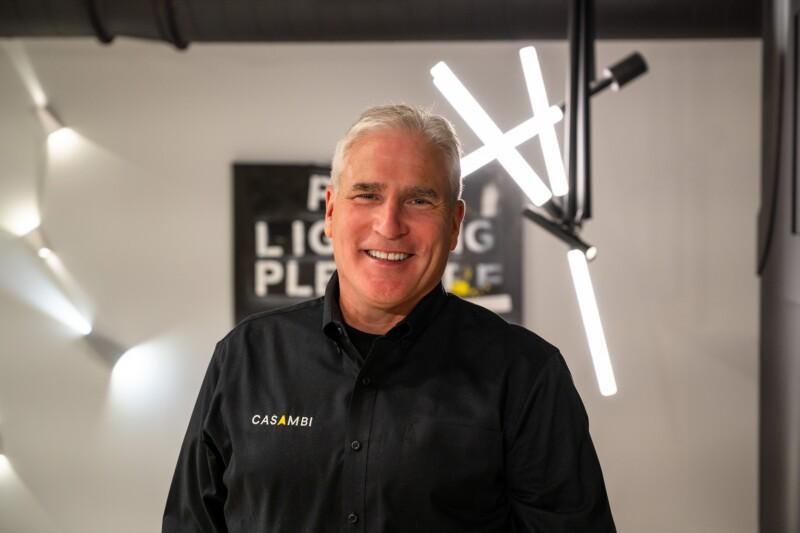Wireless Lighting Control Demystified

The digital world comes with many advantages; the biggest of these is arguably the flexibility afforded by 21st Century technology. So many of the options available to tech users today would have felt like a pipe dream a mere ten years ago. This has led to an unending march of technology – smart lighting included.
What makes smart lighting smart?
Smart lighting is transforming illumination simply because it offers the end-user enhanced, flexible control. Aside from on/off, traditional lighting offers only limited dimming. Smart lighting, on the other hand, can be introduced to provide a more human-centric approach to illumination, giving near-limitless possibilities for safe, productivity-boosting lighting in the workplace (be it an office, production plant, or practically any other place of work), but to make shops or any kind of exhibition space really stand out and be seen as they should. What’s more, smart lighting can be connected to motion sensors or timers for daylight and energy harvesting, as well as making substantial savings in energy and production costs – all of which can be controlled wirelessly.
The foundation of Casambi’s technology is built upon Bluetooth Low Energy (BLE), which is already implemented in all mobile devices and has significantly lower energy consumption than standard Bluetooth technology. This has allowed for designing products powered by button batteries or energy-harvesting systems and enabled BLE to claim its rightful place as an industry standard for wireless lighting control
Still, with powerful, disruptive technology such as BLE that can transform lighting in all aspects – from specifying to end-use -, there are some misconceptions that we have come across that we will dispel.
Is wireless lighting secure and reliable?
BLE can communicate directly with wireless lighting control systems without interfering with WiFi connections and other Bluetooth-centric devices. Additionally, you can install as many BLE data points as you’d like, preventing any single point of failure, meaning if one node fails, the other signals simply connect around it.
Is wireless lighting control limited to only certain use cases?
Absolutely not! A huge array of projects/locations worldwide have been integrated with the BLE mesh network topology. That coupled with an ever-expanding list of scenarios to which wireless lighting control can be applied gives endless possibilities for upgrading, retrofitting, and improving. From smaller-scale historical residences that cannot be tampered with to large-scale industrial facilities where safety and efficiency are essential, shopping centers where a product’s lighting can make or break a deal, or office spaces where productivity and wellbeing take center stage. Use cases aren’t just relegated to the previous examples either. Wireless lighting control has been successfully used in museums, hospitals, schools, and even outdoors for streets and sporting facilities!
Is wireless range limited?
This misconception has been particularly prevalent regarding Bluetooth technology. Even though Bluetooth is considered short-range, actual issues with range no longer apply when control nodes are configured wirelessly in a mesh network as part of the luminaire infrastructure. Any node can communicate with all other nodes, therefore maintaining constant and effective communication.
Is wireless lighting control hard to adopt?
The beauty of new technologies is that they are more and more powerful as time goes by. As a result, they are generally much simpler to use, and that is definitely the case with lighting control – from specifying to the end-user. Systems that were simply were not possible previously can now be designed, implemented, and used free from the constraints of complicated and disruptive wiring planning, coupled with powerful and intuitive platforms for commissioning. Additionally, the actual lighting control is designed to be as simple as possible for any individual use as needed; no degree in rocket science required!
Wireless lighting control is truly changing the way we use lighting; giving flexibility, reliability, cost and energy efficiency, cost-effectiveness, as well as a huge number of ways to use illumination for inspiration, safety, productivity, and wellbeing.


